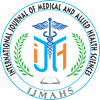A Study of Bacteriological Profile and Antimicrobial Susceptibility Pattern of Bacterial Isolates in Sputum Samples in Tertiary care hospital
Pages : 1-8Download PDF
Abstract
Aim: The study’s objective is to examine the bacteriological profile and antibiotic susceptibility pattern of isolated organisms in sputum samples in tertiary care hospitals.
Material and method: In Lucknow’s Era’s Lucknow Medical College and Hospital, the microbiology department conducted the current cross-sectional study. Using a regular sampling technique, a total of 1503 patients with clinically confirmed bacterial illnesses were included in the study. As a consequence, 108 bacterial samples produced positive results suggesting bacterial growth, whereas the other samples showed no bacterial growth or normal flora. The Bartlett’s procedures were used to assess the sputum’s quality.
Result: Among1503 samples, 108 were pathogenic. The most common isolate was Klebsiella pneumoniae [41.6%] followed by Pseudomonas aeruginosa [34.25%], Escherichia coli [21.29%], Coagulase staphylococcus aureus [1.85%] and Acinetobacter spp [0.92%] from sputum samples of patients suffering from upper or lowers respiratory infection.
Conclusion: In our study Klebsiella pneumoniae, Pseudomonas aeruginosa, Escherichia coli were the pathogens in all age groups and sexes.





